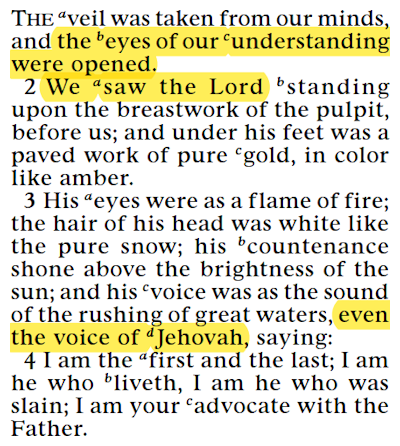Jonathan Neville abuses Oliver Cowdery once again
|
Tags: Heartland hoax, Hill Cumorah, Historical sources, Letter I, Letter VII, Oliver Cowdery, Responsible scholarship, You're scaring me Brother Neville
There are times when I question Jonathan Neville’s ability to read and understand even the most unambiguous historical texts.
Here’s the latest example, from his May 18, 2021, blog post, “Bottom line on M2C.” Critics of the Heartland hoax (including this humble blog) point out that Oliver Cowdery never claimed the location of the hill Cumorah was revealed by God when he wrote, in 1834, “When one reflects on the fact, that here, between these hills, the entire power and national strength of both the Jaredites and Nephites were destroyed.” Neville counters:
How Neville could make such a claim is simply beyond all comprehension. Perhaps we should just leave it to Oliver Cowdery to demonstrate how accurate Neville is:
How can Jonathan Neville be so far off the mark? These are basic, fundamental historical accounts that Neville himself has quoted numerous times on his own blogs!
More to the point, how can Neville compare any of these three supernal accounts from Oliver Cowdery to his passing mention of a supposed “fact” in Letter VII?
It simply boggles the mind that Jonathan Neville can be so careless in his statements, so irresponsible in his treatment of the historical record.
Even worse, it boggles the mind that any thinking Latter-day Saint would take what he claims seriously.
—Peter Pan
Here’s the latest example, from his May 18, 2021, blog post, “Bottom line on M2C.” Critics of the Heartland hoax (including this humble blog) point out that Oliver Cowdery never claimed the location of the hill Cumorah was revealed by God when he wrote, in 1834, “When one reflects on the fact, that here, between these hills, the entire power and national strength of both the Jaredites and Nephites were destroyed.” Neville counters:
Some say Oliver Cowdery never claimed revelation when he wrote Letter VII. But he also never claimed revelation when he described the visit of John the Baptist, the translation of the Book of Mormon, or other events. He simply reported what happened. Having visited the repository of Nephite records in the Hill Cumorah, how could Oliver not say it was a fact that the Cumorah of Mormon 6:6 was the same hill in New York where Joseph found the plates? The factual nature of Oliver’s report, coming as it did to refute claims the Book of Mormon was fiction, makes it more, not less, credible.The sentence I’ve formatted in boldface is simply staggering. Here Neville has asserted that Oliver Cowdery’s passing remark about “the fact” of the New York Cumorah being the last battleground of the Book of Mormon people must be taken as revealed by God because—and I quote—Oliver “also never claimed revelation when he described the visit of John the Baptist, the translation of the Book of Mormon, or other events.”
How Neville could make such a claim is simply beyond all comprehension. Perhaps we should just leave it to Oliver Cowdery to demonstrate how accurate Neville is:
Neville: “[Oliver Cowdery] never claimed revelation when he described the visit of John the Baptist.”Can any thinking individual honestly claim that the voice of Jesus Christ speaking from the heavens and the appearance of an angel from God was not a “revelation”?
Oliver Cowdery (Letter I; cf. Joseph Smith—History 1:71 fn.):
Neville: “[Oliver Cowdery] never claimed revelation when he described…the translation of the Book of Mormon.”Can any thinking individual honestly claim that “a voice dictated by the inspiration of heaven” was not a “revelation”?
Oliver Cowdery (Letter I; cf. Joseph Smith—History 1:71 fn.):
Neville: “[Oliver Cowdery] never claimed revelation when he described…other events.”Can any thinking individual honestly claim that Oliver Cowdery “never claimed revelation when he described…other events,“ when here is an account written by Joseph Smith and Oliver Cowdery in which they testified that they both saw and heard the Lord Jesus Christ?
Oliver Cowdery (Joseph Smith, Journal, 3 April 1836; cf. D&C 110:1–4):
How can Jonathan Neville be so far off the mark? These are basic, fundamental historical accounts that Neville himself has quoted numerous times on his own blogs!
More to the point, how can Neville compare any of these three supernal accounts from Oliver Cowdery to his passing mention of a supposed “fact” in Letter VII?
It simply boggles the mind that Jonathan Neville can be so careless in his statements, so irresponsible in his treatment of the historical record.
Even worse, it boggles the mind that any thinking Latter-day Saint would take what he claims seriously.
—Peter Pan








Jonathan Neville's ability to read and comprehend historical sources are just as good as Rian Nelson's writing abilities. Which for anyone who doesn't know- it's bad.
ReplyDelete